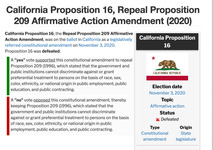 |
| Angelika/Mike Schilli |
|
Michael Now that the presidential election is over, readers of the newsletter might be wondering how people in America vote. While in Germany, a polling station often opens in the nearest elementary school, things can be a bit more rustic here in San Francisco. In our neighborhood, some residents run official polling stations in their home garages. This is no joke; as you can see from the photos, these volunteers receive official ballot boxes and papers and are responsible for properly delivering the cast votes to the official authorities.
Due to the election process called the 'Electoral College' in America, each state individually determines the president. Some states have historical preferences, and since a candidate is chosen in each state on a winner-takes-all basis, a supporter of the Republican Party in California might as well not bother voting, because California has voted for the Democratic candidate for the past 40 years. Rumor has it that even a cardboard cutout of a Democrat would still have a better chance in California than the most moderate conservative politician.
But as always, the presidential election was bundled with the abundantly practiced California ballot initiatives, the so-called 'Ballot Measures.' Citizens here can vote directly on various issues, such as 'Proposition 18,' which proposed lowering the voting age to 17 (rejected by 56%). Or 'Proposition 16,' which would have allowed the state, contrary to the Constitution, to give preferential treatment to ethnic minorities (rejected by 57.2%). Or 'Proposition 22,' which allows taxi companies Uber and Lyft to classify drivers as independent contractors rather than employees (approved by 58.6%).
So, when a Californian goes into a garage polling station, they receive a huge ballot and have to check not only 'Trump' or 'Biden,' but also several dozen boxes for numbered propositions. The ballot measures are named at the discretion of the petitioners, and it is often not easy to figure out what voting 'Yes' or 'No' actually means. For example, the vote on Proposition 16 was formulated as follows: 'Repeal Prop 209 Affirmative Action Amendment.' It was about repealing an old proposition from 1996, which prohibited the state from treating citizens unequally just to benefit certain minorities.
Back then, it was a halt to the so-called 'Affirmative Action,' a state program that tried to improve the living conditions of minorities like Blacks or Latinos through state interventions, for example, by giving them preferential consideration in college admissions. This, of course, angered other groups like Whites or Asians, who, despite better grades, were at a disadvantage. So, in 1996, Prop 209 determined that this was not lawful. Prop 16 in 2020 brought this old issue back and aimed to legalize this unequal treatment again. Therefore, voting 'Yes' on the ballot was in favor of repealing the old proposition, thus legalizing unequal treatment.
By voting 'No,' one voted against the repeal, thereby supporting the continuation of the current practice of equal treatment. To ensure that even people without a higher education are not overwhelmed, websites like ballotpedia.org explain what a 'Yes' and 'No' vote means for each question. Voters often enter polling stations with self-written tables that indicate which box to check for each number to achieve the political outcomes they planned at home. Some also bring cheat sheets from activists, listing the recommended choices for those they trust to copy. The result: As mentioned above, Prop 16 was rejected by 57.2% of California voters, so it remains illegal for the state to grant advantages to minorities. The principle of equal treatment remains in place.














